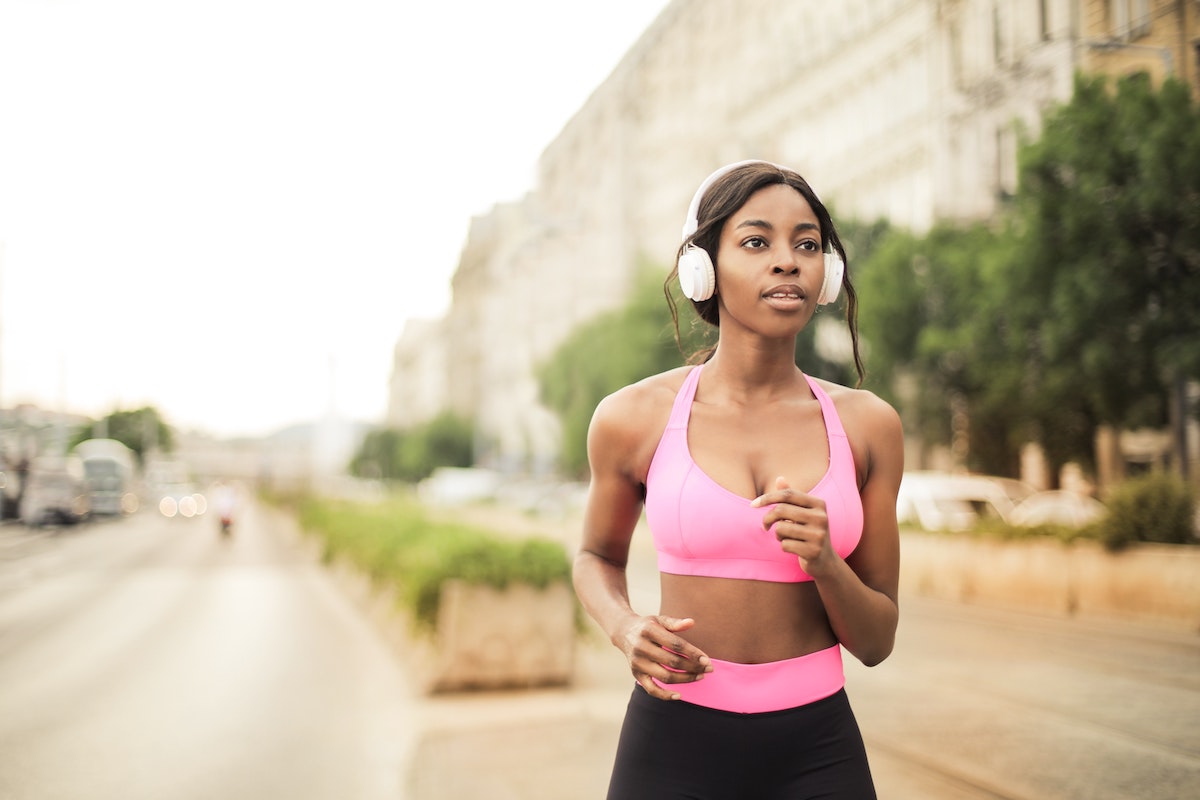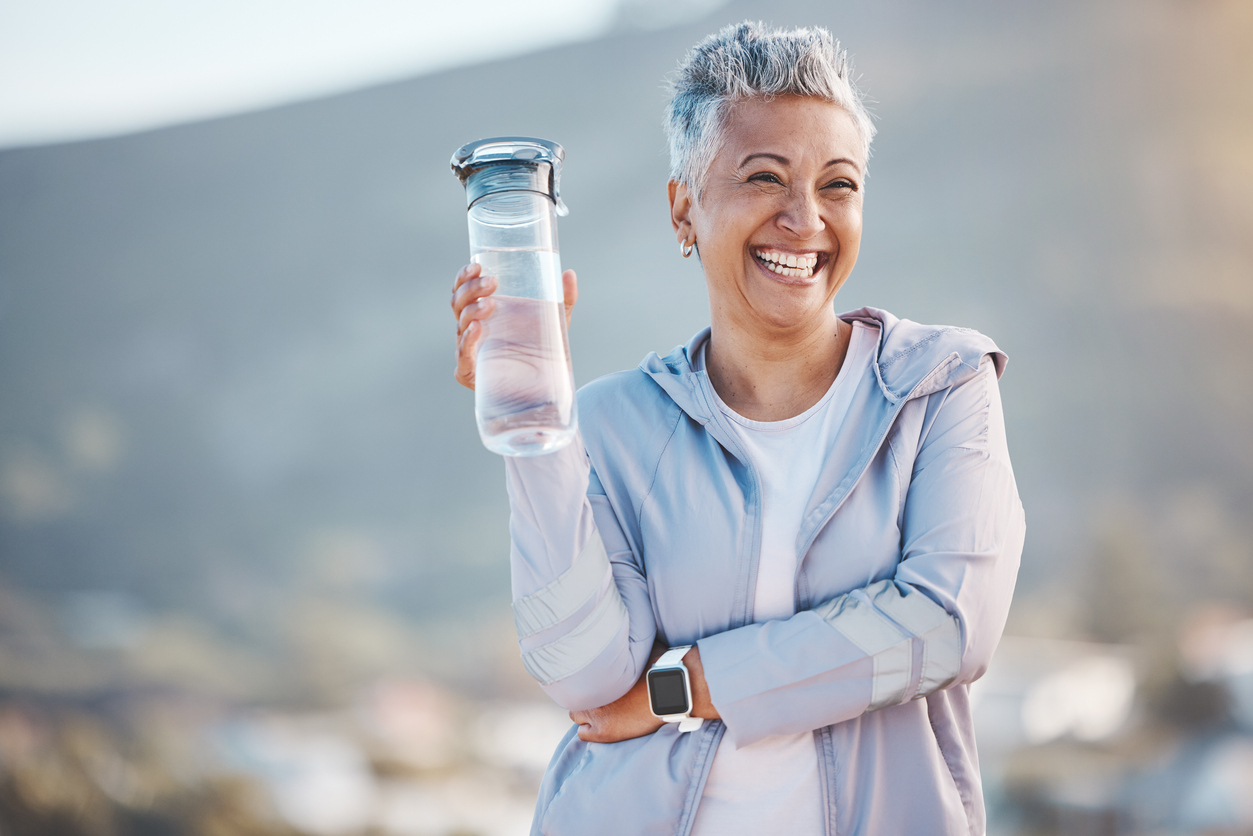
How Environmental Toxins Threaten Women’s Health
September 2, 2023Pollution and Sleep
September 2, 2023
The Best Products to Help with Seasonal Affective Disorder
Author: Melissa Zimmerman
Many people experience periods of feeling down. For some, these changes in mood accompany the changing of the seasons. It’s not uncommon for shorter winter days and gloomy weather to bring about low energy and a desire to hibernate. But if you begin to notice a pattern of depression emerging only during certain seasons, you may be suffering from seasonal affective disorder (SAD).
Thankfully, there are a handful of science-backed strategies that can help regulate your hormones during the darker months. We talked to TK experts and have outlined products that will actually help.
What is Seasonal Affective Disorder?
Serotonin and melatonin, two neurotransmitters affected by sunlight, help maintain the body’s daily sleep-wake cycles, part of our circadian rhythms. “The human body has a significant connection with its surroundings, including the change of season, the amount of light from the sun, and the atmospheric pressure,” Spencer Kroll, MD, Ph.D., an internal medicine specialist at Kroll Medical Group in New Jersey, told Insider. In people with SAD, shorter winter days may lead to changes in serotonin and melatonin levels, resulting in changes in sleep and leading to depression and insomnia.
What are the Signs and Symptoms of SAD?
Seasonal affective disorder is a type of depression, so it’s characterized by losing interest in activities you once enjoyed, changes in sleep, weight, appetite, or energy, experiencing feelings of hopelessness, worthlessness, or frequent thoughts of death or suicide. However, with SAD, these symptoms are tied to the changing of the seasons.
In most cases, SAD symptoms begin in the fall and last through the winter. This is known as winter-pattern SAD. However, some people may experience summer-pattern SAD, with depressive episodes during the spring and summer months.
“Those who are depressed during the winter typically show symptoms such as sleeping too much, exhaustion, less interest in fun, and decreased libido, for example, while those with onset in the spring or summer may appear almost manic, requiring less sleep and may look keyed up to others. Again, these are all related to decreased or increased light from the sun,” says psychologist and co-founder of Hornstein, Platt and Associates, Dr. Robin T. Hornstein, Ph.D.
In either case, professionals look for a pattern of depressive symptoms occurring during specific seasons when making a diagnosis of seasonal affective disorder.
Products to Try for Seasonal Affective Disorder
There are a number of treatments and products widely used for treating seasonal affective disorder. Some, such as cognitive-behavioral therapy and medications, require a professional. Others, however, can be tried from home.
Here are some of the best products to try to combat the effects of SAD.
Light Therapy Devices
“I will stand behind the idea that everyone who lives in an area where there is a true seasonal change with fewer daylight hours should be given a light therapy box for their 18th birthday,” says Dr. Hornstein.
Although numerous studies support its effectiveness, researchers are still trying to determine exactly why light therapy is an effective treatment for depression and other mood disorders. Most evidence suggests light therapy works by influencing circadian rhythms (your internal sleep-wake clock.) When light travels from the eyes via the optic nerves to the hypothalamus area of the brain, which regulates circadian rhythms. Several studies suggest light therapy may also work by increasing serotonin production.
Light therapy treatment uses a device that mimics natural, outdoor sunlight. A typical light therapy device contains fluorescent lights mounted on a metal reflector and fitted with a screen to block damaging UV rays. Experts recommend light therapy devices that output 10,000-lux, which is the equivalent to early morning sunlight.
To use a light therapy device, begin with 15-minutes of light exposure per day, usually in the morning right after waking. Time may be gradually increased up to 30 minutes per day. To be effective, the light from a light therapy device needs to reach your eyes, so plan on sitting or working near the light box with your eyes open. Don’t look directly at the light box, however, because the bright light could damage your eyes.
The Carex Day-Light Classic Plus is both height- and angle-adjustable and offers both light therapy and task modes so you can use it as a functioning desk lamp as well as a light therapy device. Retail price $149.99.
Sunrise Alarm Clocks
Dr. Hornstein says alarm clocks that mimic the sunrise can also be surprisingly helpful for some people.
Like a light therapy box, sunrise alarm clocks are designed to simulate natural sunlight and enforce typical sleep-wake patterns. A sunrise alarm clock also provides a more gentle wakefulness in the morning, gradually and steadily increasing light over 30-60 minutes. Evidence shows that light exposure upon waking can improve sleep quality and cognitive function.
Sunrise alarm clocks offer less light intensity than light boxes, typically providing 100-300 lux of light warmth. They can be used alone or in addition with a light therapy box.
Phillips SmartSleep Sleep and Wake-Up Light, simulates a natural sunrise to help you wake up, gradually changing from a soft red to bright yellow light. A light-guided wind-down function helps transition you to sleep. Retail price $159.95.
Vitamin D Supplements
A systematic review and meta-analysis of Vitamin D and depression concluded that low vitamin D levels, often due to little outdoor exposure to sunlight, is associated with depression. Researchers believe that Vitamin D controls serotonin concentrations and that Vitamin D deficiency and low serotonin levels are a common denominator in many neuropsychiatric disorders.
Many people with SAD have deficient levels of vitamin D, and researchers suggest taking 100,000 IU daily may improve symptoms.
According to the National Institute of Health, studies testing whether vitamin D is effective in SAD treatment have produced mixed findings, with some results indicating that it is as effective as light therapy but others detecting no effect. Your general practitioner can test for vitamin deficiencies.
If you do decide to supplement with Vitamin D, Pure Encapsulations offers a 10,000 IU Vitamin D3 capsule that is gluten-free, GMO-free, and hypoallergenic. Retail price $43.50 for 120 capsules.
Exercise Equipment
“Exercise is helpful as it releases neurotransmitters such as serotonin, norepinephrine, and dopamine,” says Dr. Hornstein.
Numerous studies have found that exercise can be an effective treatment for depression. In one study, running was found to be as effective as psychotherapy for treating depression. Not into running? Another study compared anaerobic and aerobic exercise and found that weight lifting was just as effective as running for alleviating depression symptoms.
How often you exercise is more important than how long or hard you work out.
One study found consistent exercise of at least 15 minutes, three times a week is significantly associated with lower risk of depressive symptoms Find an exercise that you enjoy and can do regularly, whether that’s joining a gym or setting up a workout space in your home.
If you’re looking for a full-body home gym, the Bowflex Revolution is designed to work every major body zone and do 100 different exercises. Retail price $2,899, financing available.
If an aerobic workout is more your speed, clip into a Peloton bike. In addition to cycling, the Peloton membership brings live and on-demand classes like strength training and yoga direct to your living room. Retail starting at $1,895 with financing available, plus $39 monthly membership.
Meditation Apps
“Other therapies to improve relaxation, such as meditation and guided imagery, can also be useful in treating SAD,” says Dr. Kroll. A 2014 review of 47 studies of 3,515 participants suggests that mindfulness meditation programs show moderate evidence of improving anxiety and depression.
If meditation is new to you, don’t worry. Smartphone apps like Headspace can help you learn with guided meditations in as little as 5 minutes a day. Download Headspace and enjoy a 7-day free trial. $5.99 a month billed annually or $12.99 billed monthly after that.
When to Seek Professional Treatment for SAD
If you have tried at-home treatments for seasonal affective disorder, such as Vitamin D supplementation, light therapy, and exercise, and haven’t found relief, it may be time to seek professional help.
Some treatments for SAD can only be provided by a professional, including cognitive behavioral therapy and antidepressant medications.
Cognitive-behavioral therapy (CBT) is a form of therapy aimed at helping people change the way they think about negative and overwhelming patterns. For people with seasonal affective disorder, CBT can be adapted to focus on replacing negative thoughts about the winter season with more positive thoughts. CBT is provided by highly trained therapists, psychotherapists, and some psychiatrists.
You will also need to seek help from a professional if you want to try antidepressant medications.
“Some people with SAD benefit from antidepressant treatment, especially if symptoms are severe,” says Dr. Kroll.
SAD, like other types of depression, is associated with disturbances in serotonin activity. One class of antidepressant medications called selective serotonin reuptake inhibitors (SSRIs) are also used to treat SAD when symptoms occur. Studies show the benefits of antidepressant medications tend to be greater when depression is more severe than mild. Your primary care physician or a psychiatrist are both qualified to prescribe antidepressant medications.
If depression symptoms are seriously interfering with your ability to function at home, work, or with your family, or if you are having suicidal thoughts or ideations, please seek professional help.
“Please know this is not a shortcoming in you,” says Dr. Hornstein. “SAD is a real and common thing that happens. Depression is also associated with higher rates of hopelessness and even suicidal behaviors, so please don’t take it lightly. Seek help so you can feel better.”

